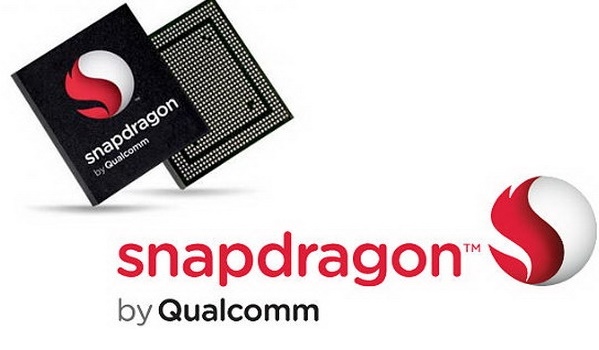Breaking the dawn, Don of the smartphone chipset manufacturers Qualcomm has come up with three all new chipsets, named the Snapdragon 625, Snapdragon 435, as well as the Snapdragon 425. All 3 will certainly launch in smartphones from the second half of 2016. As per the company, “the advancements and also technologies inside these mobile processors are made for better experiences, higher performance, as well as longer battery life.” It additionally revealed a brand new SoC for smartwatches, the Snapdragon Put on and the Snapdragon X16 gigabit LTE.

All 3 mobile SoCs includes LTE support with all types of connectivity- Wi-Fi 802.11 a/c with MU-MIMO, double video camera ISPs, Qualcomm Hexagon DSP (electronic signal processor) for audio as well as a sensor hub, and Qualcomm Quick Charge 3.0.
The Snapdragon 625 is likewise the company’s initial to utilize 14nm FinFET modern technology. The SoC includes eight ARM Cortex-A53 cores at 2GHz; Qualcomm Adreno 506 GPU, as well as OpenGL ES 3.1+. It supports eMMC 5.1 storage with SD 3.0 (SDCC); LPDDR3 933MHz memory; 24-megapixel camera with Double Image Sensing unit Processor (ISP); around 4K resolution video capture as well as playback with H. 264 (AVC) as well as H. 265 (HEVC) assistance, and also up to 1900×1200 display screen at 60fps or 1080p.
The chipset also fitted with X9 LTE connection with LTE FDD, LTE TDD, CDMA1x, EV-DO, TD-SCDMA and GSM/EDGE, WCDMA (DC-HSPA+, DC-HSUPA). It can handle LTE Feline. 7 speeds of as much as 300 Mbps download speeds as well as around 150 Mbps upload rates, around 2×20 MHz carrier aggregation. On the connectivity front, the SoC sustains USB 3.0, NFC, as well as Bluetooth 4.1.
The Qualcomm Snapdragon 425 attributes four ARM Cortex-A53 cores at as much as 1.4 GHz; Qualcomm Adreno 308 GPU, and also OpenGL ES 3.0. It sustains eMMC 5.1 storage; LPDDR3 667MHz memory; around 16-megapixel cam with Dual image Sensing unit processor (ISP); as much as 1080p video capture and playback with H. 264 (AVC) as well as H. 265 (HEVC), as well as much as 1280×800 display at 60fps or 720p.
The chipset features assistance for the X6 LTE connection with Worldwide Method LTE FDD, LTE TDD, WCDMA (DC-HSPA+, DC-HSUPA), CDMA1x, EV-DO, TD-SCDMA as well as GSM/EDGE. It can take care of LTE Pet cat. 4 speeds of approximately 150 Mbps download speeds and approximately 75 Mbps upload rates, and can go up to 2×20 MHz connection through broadband connectivity. On the connection front, the SoC is coupled with USB 2.0, NFC, as well as Bluetooth of version 4.1 which is the latest.
Finally, the Qualcomm Snapdragon 435 sporting 8 ARM Cortex-A53 cores which can clocks at 1.4 GHz; Qualcomm Adreno 505 GPU, and also OpenGL ES 3.1+. It supports eMMC 5.1 storage space with SD 3.0 (UHS-I); LPDDR3 800MHz memory; up to 21-megapixel video camera with Twin Image Sensing unit Processor (ISP); approximately 1080p video clip capture and playback with H. 264 (AVC) as well as H. 265 (HEVC), and approximately 1080p display at 60fps in addition to 1080p outcome.
The chipset sustains X8 LTE connectivity with International Method LTE FDD, LTE TDD, WCDMA (DC-HSPA+, DC-HSUPA), CDMA1x, EV-DO, TD-SCDMA and GSM/EDGE. It could deal with LTE Cat. 7 speeds of around 300 Mbps download and install rate and as much as 100 Mbps upload speed, and also approximately 2×20 MHz service provider gathering. If we are talking about connectivity, the SoC assists USB 2.0, NFC, as well as Bluetooth 4.1.
Coming to the Snapdragon Wear 2100 SoC, the company states it is 30 percent smaller sized than the Snapdragon 400 used in many smartwatches nowadays, while additionally taking in 25 percent less power compared to it. The SoC’s connection has actually also been enhanced, and has enhanced modems for Bluetooth, LTE, and also Wi-Fi.
Qualcomm’s calling the Snapdragon X16 LTE the world’s first commercially announced modem with gigabit LTE speeds – as much as 1Gbps. It makes it 100 percent faster compared to its previous Snapdragon X10 LTE modem that delivered speeds up to 450Mbps. It makes use of carrier-aggregation much like the Snapdragon X10, making use of three 20MHz service providers but recording up to 10 streams of LTE data this time around about with four antennas. Incorporated with brand-new signal processing, it has the ability to increase the throughput of each stream to 100Mbps. The company claimed the X12 was the first to use this signal processing, with around 6 streams of data at approximately 600Mbps.